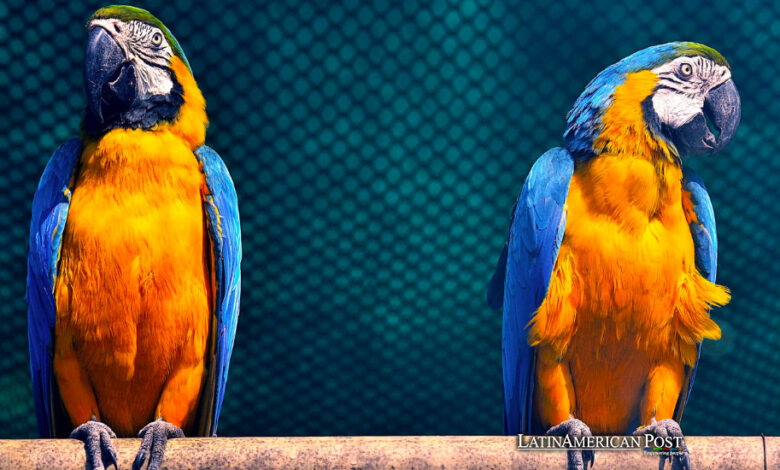Brazil in a Cross-Continent Crusade to Rescue its Wildlife from the Clutches of Illegal Trade

In a landmark operation, Brazil’s authorities successfully repatriated endangered parrots and monkeys trafficked to Togo, highlighting the global fight against wildlife smuggling and underscoring Latin America’s pivotal role in biodiversity conservation.
Cracking Down on Trafficking Networks: Brazil’s Bold Move
In an unprecedented move against wildlife trafficking, Brazil’s federal police and the Brazilian Institute of Environment and Renewable Natural Resources (Ibama) have orchestrated the return of native parrots and monkeys believed to have been smuggled into Togo. This operation not only symbolizes a significant triumph in the ongoing battle against illegal animal trade but also brings to light the broader context of wildlife trafficking in Latin America and its far-reaching impacts.
Over the past weekend, Brazil welcomed 12 Lear’s macaws and 17 golden lion tamarins, species emblematic of the country’s rich biodiversity yet perilously close to extinction. These animals, discovered in Togo’s capital, Lome, on February 12, had endured a harrowing journey across the Atlantic aboard a sailboat under the Brazilian flag, highlighting the sophisticated and far-reaching networks of wildlife traffickers.
Global Collaboration in Action: Arrests and Transnational Links Revealed
The international collaboration that led to the animals’ discovery and subsequent repatriation involved several countries, showcasing the global commitment to combating environmental crimes. The operation culminated in the arrest of four individuals from Uruguay, Suriname, Brazil, and Togo, underscoring the transnational nature of wildlife trafficking rings.
The financial incentives driving the illegal wildlife trade are staggering, with each Lear’s macaw fetching between $60,000 and $100,000 and golden lion tamarins valued at $15,000 each in clandestine markets. This lucrative trade poses a dire threat to biodiversity. It undermines efforts to preserve ecosystems and sustainable livelihoods in Latin America and beyond.
Upon their return, the animals were found in deplorable conditions, suffering from mistreatment and neglect. Their cages, smeared with motor oil, underscored the cruelty and inhumanity pervasive in the illegal pet trade. Ibama’s coordinator for managing fauna and aquatic biodiversity, Juliana Junqueira, lamented the animals’ ordeal, emphasizing the need for extensive rehabilitation before being reintroduced into the wild.Cracking Down on Trafficking Networks: Brazil’s Bold Move
Brazil’s Success and the Call for Global Cooperation
Brazil’s successful repatriation of these animals is a beacon of hope in the fight against wildlife trafficking. However, it also highlights the need for more robust international cooperation and vigorous enforcement of environmental laws to dismantle the networks responsible for such crimes.
The issue of wildlife trafficking is not isolated to Brazil; it is a pervasive problem affecting numerous countries across Latin America. Nations like Mexico, Colombia, and Peru also grapple with the illegal trade of exotic species, including birds, reptiles, and amphibians, destined for collectors and black markets worldwide. The trafficking of these animals threatens their survival, disrupts local ecosystems, and hampers conservation efforts.
Also read: Brazil Battles Bird Flu as Seal and Sea Lion Deaths Surge
As Latin America continues to battle against the scourge of wildlife trafficking, the international community must bolster its support for these efforts. Strengthening legal frameworks, enhancing cross-border cooperation, and increasing awareness about the importance of biodiversity conservation are imperative steps towards safeguarding the region’s wildlife heritage.
Brazil’s operation serves as a stark reminder of the challenges and complexities surrounding wildlife trafficking. It underscores the urgent need for concerted global action to protect endangered species from the brink of extinction and preserve the natural world for future generations.





